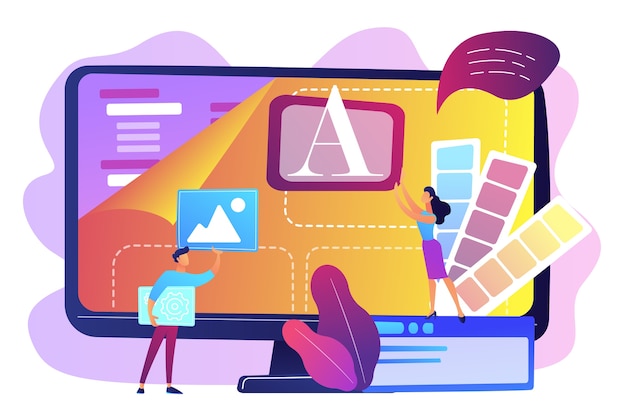A new form of easy-does-it web development tools made headlines in 2020 for good reasons: Low-code and no-code (LCNC) development. With digital transformation in full swing across the world, businesses and organizations are chasing after the best tools that they can use to their advantage. But is the buzz as good as it says? Will LCNC mold the future of development?
The sudden popularity of LCNC is no joke for both client organizations and developers. It has gained enough traction in the market that data from a Forrester study says LCNC spending is estimated to reach US $22 billion by 2022 from just $4 billion back in 2018.
The LCNC momentum is not slowing down either; a recent Gartner report forecasts that by 2023, more than half of medium to large companies would be using a form of low-code app development.
Because of the impact LCNC has created, many companies are figuring out if they even need complex IT and web development teams to deliver their digital requirements. While LCNC has its advantages, it simply can’t replace all of the traditional coding processes, and here are some reasons:
An Evolving Platform
The most important benefit of low- or no-code programming or development is democratizing application-building and even web design services. Even inexperienced developers or total newbies who have never written code can create tools to make their work easier.
However, there are still many areas for improvement. AdEspresso CEO and Co-Founder Massimo Chieruzzi said in Coredna that the no-code market is still fragmented and evolving, with many of its touted promises still waiting to be realized.
Low-code and no-code are also different from each other, with each having their strengths and limitations. For example, low-code still needs a certain degree of knowledge to work efficiently. Both need upgrades with regards to scalability and security, which are highly critical factors for businesses.
Another area LCNC development needs to improve on is integration with legacy systems – how well the output would fit in the organization’s front-end, for example. If it doesn’t enhance the customer experience, then the effort building it, no matter how simple or quick, would also have been for naught.
The Complexity Barrier
A web designing company can have developers, but a single developer can’t do everything a company can. Similarly, LCNC applications are best deployed for simple functions as novel parts of a bigger system. The more complex the requirement, the less LCNC platforms can meet.
Coveros CTO Thomas Stiehm describes this barrier as an inherent disadvantage of LCNC. He stated that solving specific problems makes good sense for LCNC platforms, however, enterprise-level applications which serve as the digital backbone of organizations, would still need programmers with great skills to meet large-scale requirements.
The adoption of low-code by big companies are contributing to their improvement, but it may take some time. Google acquired no-code platform provider AppSheet in early 2020 to integrate better with G Suite and their other products, primarily CRM and personalized reporting. This may pave the way for more automation in the enterprise level over the next few years.
There are also some processes that low- or no-code platforms can’t or will have difficulty building solutions for, such as digital transformation. For instance, doing digital transformation strategy consulting in Singapore (or in most countries) would require other services and tools beyond the scope of LCNC.
Customization and Tweaking
As of writing, even the most flexible of low-code and no-code development tools have restricting limitations on what they can offer. No-code in particular may be a double-edged sword in creating custom solutions for some organizations. Building extensions or applications is easier indeed, but it may miss out on optional little details that could only be done with old-school coding.
For example, creating unique functions and specially-made website elements that fit a brand’s personality will most likely need an expert developer’s skill to implement correctly. Currently, WordPress and Wix users can already create feature-rich websites with these low-code platforms, and tapping the knowledge of experienced web developers can help bring out even better results.
Conclusion
Low-code and no-code development has been a blessing for many businesses – and even individuals. It gave rise to “citizen developers” who can now create many applications even with little to no coding knowledge. It can help businesses speed up workflows, automate processes, and increase productivity. However, LCNC is essentially an additional tool, and cannot replace the extensive (and growing) capabilities of expert teams of developers.
Creating an app or website from scratch is best done with reliable development teams such as the User Experience Researchers Group (USER), who provides website development services for clients globally. Our services include usability testing and in-depth market research, ensuring you a productive web development process right from Day 1 of work. For more information, you can reach out to us via https://www.user.com.sg/contact/.





